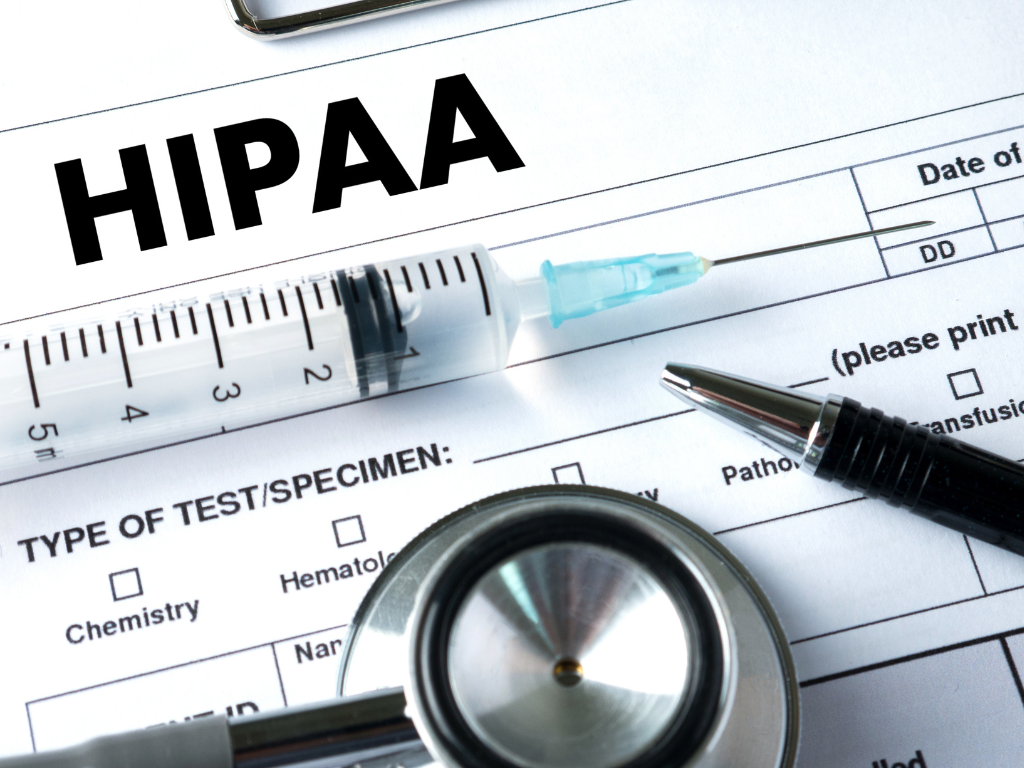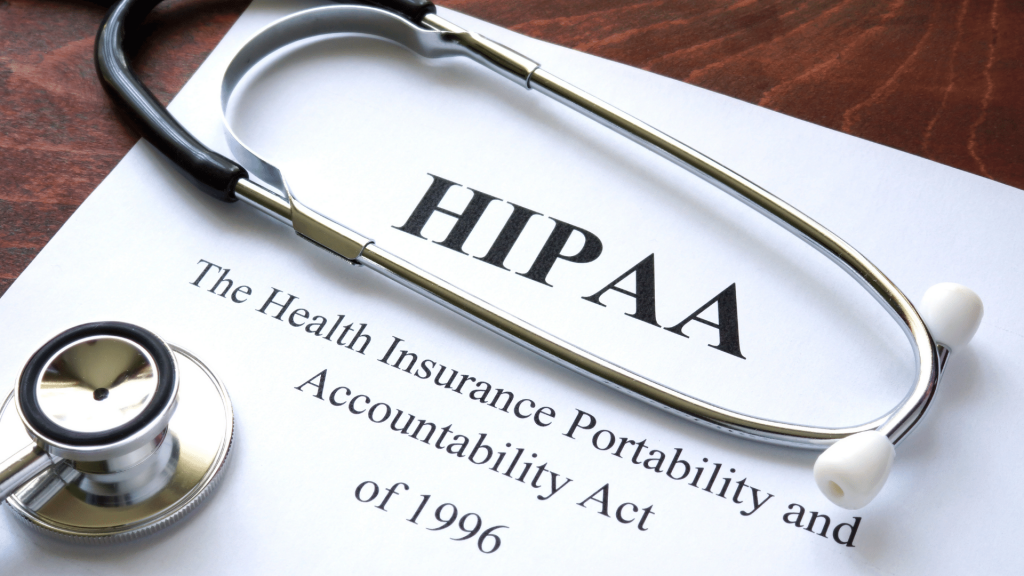The Health Insurance Portability and Accountability Act (HIPAA) of 1996 provides security provisions and data privacy standards to safeguard highly sensitive health information. All covered entities and their business associates dealing with patient data must comply with HIPAA rules. Otherwise, they could face serious repercussions and hefty fines.
Admittedly, complying with HIPAA can be overwhelming due to its ever-evolving nature and comprehensive coverage. That’s why we have devised a HIPAA compliance checklist to help make such a daunting task more manageable.
2024 HIPAA Compliance Checklist
- Understand HIPAA Rules and Regulations
- Conduct Risk Analysis and Evaluation
- Assign a Dedicated Compliance Officer
- Implement Robust Security Policies
- Develop Strong Contingency Plans
1. Understand HIPAA Rules and Regulations
As mentioned earlier, HIPAA compliance guidelines are constantly changing, especially with the introduction of newer communication technologies. To maintain compliance and avoid costly penalties, you must invest time to understand and revisit the fundamentals of HIPAA. You also need to be aware of recent updates.
For example, HIPAA recently announced that mental health professionals should also protect protected health information (PHI), especially those working in the fields of psychology and psychiatry. Of course, the regulations still require that all privacy issues are thoroughly investigated and resolved.
HIPAA compliance is not to be confused with HIPAA certification. The former refers to the adherence to HIPAA Privacy and Security Rules as well as its other guidelines. On the other hand, the latter refers to the completion of a course that specifically tackles HIPAA. Organizations or individuals that finish this course receive a certificate as official proof.
2. Conduct Risk Analysis and Evaluation
Once you’ve ticked the first item off this HIPAA compliance checklist, the next step is to assess how your organization handles PHI. Look for weak points that could potentially result in breaches. It’s also crucial to check the tools you’re using and see if they are still HIPAA compliant.
Hiring a third party to conduct risk assessment and evaluation is highly recommended. They can provide you with a more in-depth insight into the current state of your systems and processes. They can also help you come up with ways to rectify risks.

3. Assign a Dedicated Compliance Officer
It is advantageous for a covered entity to have a dedicated compliance team or officer. They can be responsible for verifying that HIPAA compliance guidelines are followed by everyone in the organization. They also ensure that all employees of the covered entity adhere to security rules and regulations.
The compliance officer can be a member of your staff. There are no specific qualifications required for this role, but the appointed person should undergo HIPAA training. It also helps to equip the designated compliance officer with tools and technology to help with their task. Some companies use compliance software that comes with learning modules. Others subscribe to HIPAA-compliant systems that allow them to manage patient records and medical information securely.
If you can’t have an in-house compliance officer, your organization can also hire consultants or contractors.
4. Implement Robust Security Policies
The next item on this HIPAA compliance checklist is that every organization has to build and follow a clear set of guidelines for data privacy. Having internal guidelines helps ensure that everyone who handles PHI within your organization knows how to keep them secure. Your policies should cover cybersecurity and administrative standards as well as document management and disposal.
When drawing up policies, it is crucial to have everything properly documented and disseminated. If you are introducing new tools in line with new standards, you need to orient every member of your organization to how you use them.
5. Develop Strong Contingency Plans
Healthcare providers should know what to do in case there’s a breach or violation of the Privacy Rule. No matter how robust your security measures are, the risk of breaches can never be eliminated. People make mistakes and technology can sometimes become faulty. In this light, you should always have a contingency plan.
One of the most common HIPAA violations that covered entities face is unintentionally leaving health records in unsecured public areas. Once an unauthorized person stumbles upon them and sees confidential patient information, it already calls for a HIPAA violation.
The best thing to do when this occurs is to take swift action to rectify the situation. This is where a contingency plan comes into play. When you already have it in place, you no longer have to figure out what to do. It’s already been outlined beforehand.
The earlier you can detect a breach and the quicker you can report the incident, the better.

The Use of Technology and Third Parties in HIPAA Compliance
Technology plays a crucial role in helping your organization adhere to HIPAA compliance guidelines. One of the benefits of using technology is it significantly reduces human errors, which is one of the common causes of breaches and other HIPAA violations. It also automates your tasks and optimizes your workflow.
Furthermore, having a team of experts on call can help with HIPAA compliance as they can provide you with insights. For instance, partnering up with IT companies can help you select the right set of tools and software. Seeking the services of a legal consultant or team is essential, as they can provide advice in case you commit an infraction.
However, before introducing any of these tools and services, you must carefully examine and choose the right providers. Not all are created equal. As a rule of thumb, the third-party provider should be able to execute a business associate agreement (BAA). They also need to fully understand the HIPAA Privacy and Security Rules as they will be handling PHI.
Best Practices for HIPAA Compliance
Aside from the items mentioned on our HIPAA compliance checklist, you can also do other things to avoid committing violations. Here are some of them:
- Create strong login measures and regularly change your passwords.
- Establish proper disposal of old documents and health records.
- Monitor software activity and review audit trails.
- Revisit and review existing policies and standards.
- Adopt a digital solution for data collection and document workflow.
There’s no denying that HIPAA compliance guidelines can be confusing to implement. That’s why it helps to have a checklist to break down all the regulations into bite-size pieces. It also wouldn’t hurt to hire experts to help you navigate through all the intricacies of this federal law.
When combined with the right tools, these tips can help you avoid costly mistakes and HIPAA infractions.
How Fill Can Help You Follow HIPAA Compliance Guidelines
Fill is a top choice among covered entities when looking for a reliable document-signing tool that’s secure and HIPAA-compliant. Our easy-to-use platform uses stringent security measures to safeguard patient data. It’s virtually impossible for unauthorized parties to access patient information, thanks to our military-grade encryption.
You can confidently sign health documents and HIPAA forms using our secure esignature platform. You know you’re sharing highly sensitive documents with authorized individuals with Fill’s signature verification.
You can also integrate Fill into your EMR and EHR systems for a more centralized process. Other features include mobile document signing, a built-in document scanner, and a vast library of templates. If you want to know more about Fill and how it can help you with your HIPAA compliance, sign up for an account and start a demo today.




